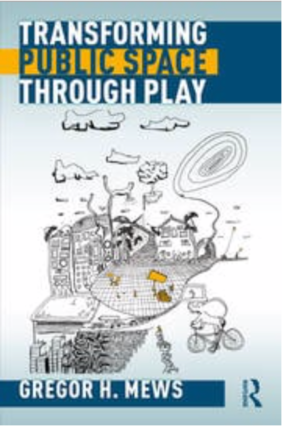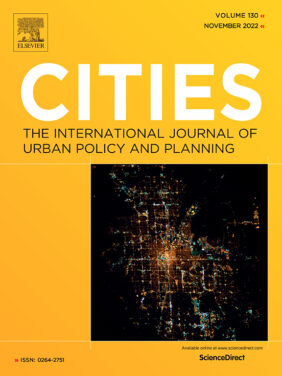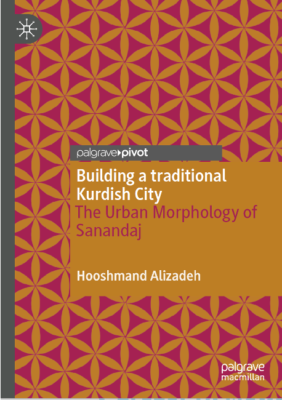For members only
Background and objectives
Gerd Albers Award (GAA) was established in 1999 in honour of Professor Gerd Albers, a co-founder and past president of the Society, who placed a particular emphasis on the task of publishing as a means of elucidating both the current debate and practical achievements in the planning field. This reputable award is bestowed for the best publication (book, book chapter, journal article and/or published project report) of the ISOCARP members.

Gregor H. Mews, Gerd Albers Award winner for best book of 2022
Eligible entries
In 2022, in total 11 GAA entries of high academic standards covering a range of topics of wide professional appeal were submitted – four books and seven journal articles:
- Building a Traditional Kurdish City: The Urban Morphology of Sanandaj, by Hooshmand Alizadeh
- Transforming Public Space through Play, by Gregor H. Mews
- Digital Twins in the Built Environment, by Qiuchen Lu, Xiang Xie, Ajith Kumar Parlikad, Jennifer Schooling and Michael Pitt
- Transforming Urban Landscape in India, by Hitesh Vaidya, Arvind Varshney, Akash Hingorani, Sujata Hingorani, Ambika Malhotra, Manasa Garikaparthi, and Ayushi Govil (Editors)
- “Organized Complexity of the Urban Object” (Journal of Design for Resilience in Architecture & Planning (DRArch), by Mark David Major, Raya M. Atour, and Heba O. Tannous
- “Unbalanced Development Characteristics and Driving Mechanisms of Regional Urban Spatial Form: A Case Study of Jiangsu Province, China” (Sustainability), by Guoping Xiong, Xin Cao, Nicholas A. S. Hamm, Tao Lin, Guoqin Zhang, and Binghong Chen
- “Street vitality and built environment features: A data-informed approach from fourteen Chinese cities” (Sustainable Cities and Society), by Yinghong Jiang, Yun Han, Mengyang Liu, and Yu Ye
- “Sustainable urbanism: riverfront greenway planning from tradition to innovation” (Innovation: The European Journal of Social Science Research), by Carlos J. L. Balsas
- “‘Incorporating planning intelligence into deep learning: A planning support tool for street network design” (Journal of Urban Technology), by Zhou Fang, Ying Jin & Tianren Yang
- “How neighborhood conditions and policy incentives affect relocation outcomes of households from low-income neighborhoods – Evidence from intra-city movement trajectories,” (Cities), by Tiaren Yang, Haozhi Pan, Xiaoling Zhang, Andrew Greenlee, and Brian Deal
- “Gender Inequalities and the Effects of Feminine Artworks on Public Spaces: A Dialogue” (Social Inclusion), by Hooshmand Alizadeh, Josef Kohlbacher, Rozhen Kamal Mohammed‐Amin, and Tabin Latif Raouf
Jury
The jury was composed of the Scientific Committee members, Ulrich Graute (Germany), Wenjing Luo (China), Hendricus Simarmata (Indonesia), Board member Ali Alraouf (Qatar), followed by Ana Peric (Switzerland), ISOCARP Director for Awards and jury president who decided on the winners.
Award Winners
GAA 2022 – Best Book
Transforming Public Space through Play, by Gregor H. Mews
The contribution is a rich, well-written and comprehensive piece revolving around the elusive concept of play as a social and spatial practice in cities. As the book emerged in the wake of Covid-19, strengthened neoliberalism, the systemic crisis, and the overall uncertainty, it has also become evidence of the author’s maturity. Building on a profound theoretical debate in an attempt to grasp the concept of play, the author introduces the City–Play–Framework, a tool for a practical urban analysis aimed at widening a shared awareness of the dynamics between people and their immediate environment. As such, the book is not of value only to an academic audience, but also to a range of professionals in the domains of urban planning, design, architecture, and landscape architecture, aimed at transforming dense urban centres in a post-pandemic world.
GAA 2022 – Best article
“How neighborhood conditions and policy incentives affect relocation outcomes of households from low-income neighborhoods – Evidence from intra-city movement trajectories,” by Tiaren Yang, Haozhi Pan, Xiaoling Zhang, Andrew Greenlee, and Brian Deal
The article examines the globally relevant topic of poverty by explicitly attending to the mobility patterns of the residents living in low-income neighbourhoods. Using a meticulous methodological strategy to collect and consistently analyse several million records of household-level datasets to address change trajectories in the Chicago metropolitan area over a decade, the paper significantly contributes to the residential mobility literature. More specifically, the study offers multi-layered findings concerning the impact of neighbourhood features, on the one hand, and policy incentives on relocation outcomes on the other. The merit of the paper extends beyond the analysed case to provide recommendations on the mobility patterns affected by the housing policy programmes in diverse socio-spatial settings.
GAA 2022 – Special Mention
Building a Traditional Kurdish City: The Urban Morphology of Sanandaj, by Hooshmand Alizadeh
This book reveals the socio-spatial features of a traditional Iranian Kurdish city exemplified in the case of Sanandaj. Building upon a rich historical analysis and attending to a range of factors that have affected its built environment (e.g., extroverted connection with the landscape and the fluent interplay between private and public domains in female experience), the book provides a comprehensive morphological study of Sanandaj. As a result, the book is considered an important piece to complement currently scarce literature on the Kurdish cities in general and Sanandaj in particular. Finally, the underlying narrative on the cultural background gives glimpses into reconciling tradition and modernity in Sanandaj’s dynamic contemporary development.
Congratulations to the winners and a big thank you to all authors who submitted a book or an article! We look forward to successful GAA submissions the next year, too.


